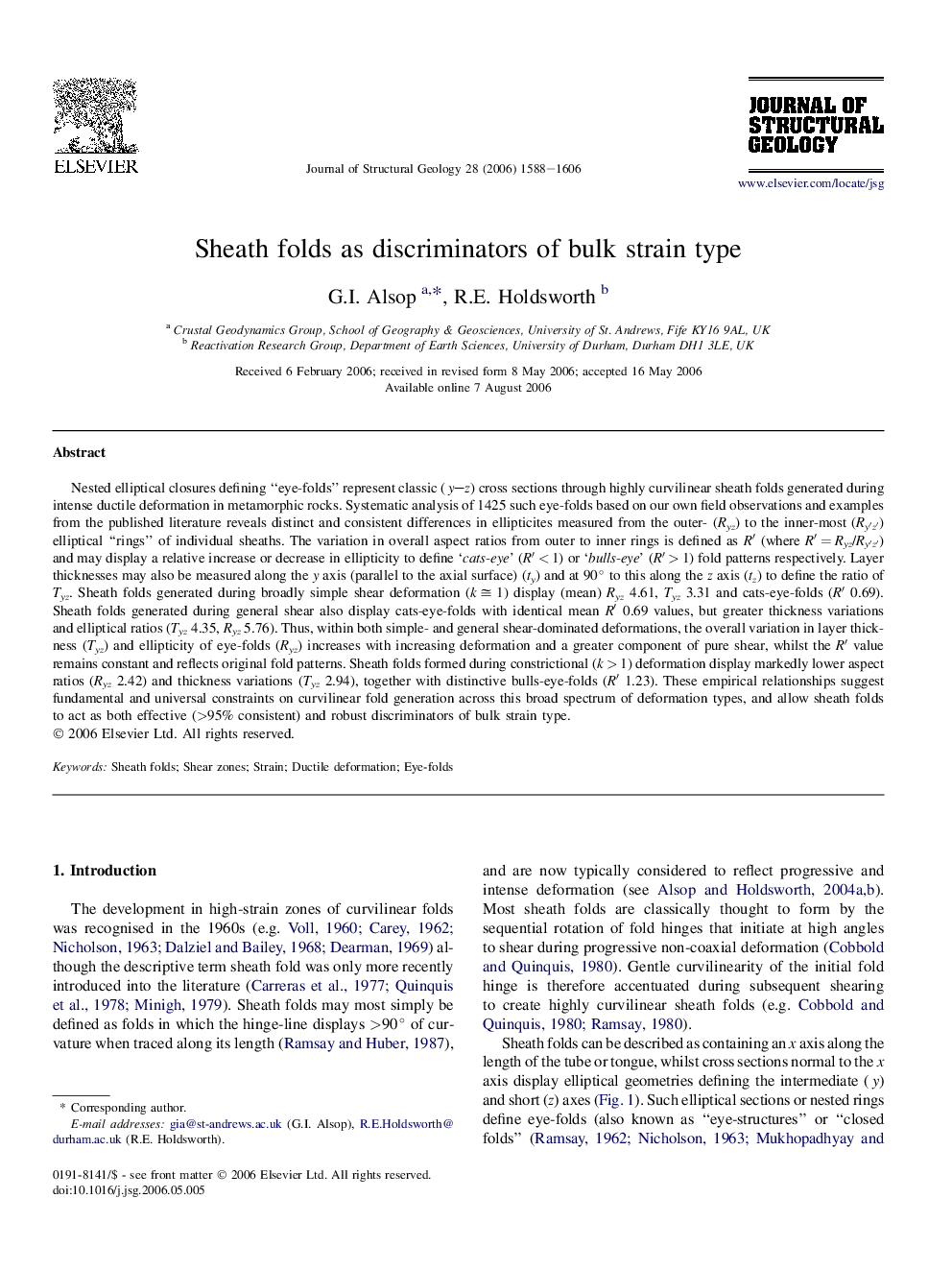| Article ID | Journal | Published Year | Pages | File Type |
|---|---|---|---|---|
| 4734000 | Journal of Structural Geology | 2006 | 19 Pages |
Nested elliptical closures defining “eye-folds” represent classic (y–z) cross sections through highly curvilinear sheath folds generated during intense ductile deformation in metamorphic rocks. Systematic analysis of 1425 such eye-folds based on our own field observations and examples from the published literature reveals distinct and consistent differences in ellipticites measured from the outer- (Ryz) to the inner-most (Ry′z′) elliptical “rings” of individual sheaths. The variation in overall aspect ratios from outer to inner rings is defined as R′ (where R′ = Ryz/Ry′z′) and may display a relative increase or decrease in ellipticity to define ‘cats-eye’ (R′ < 1) or ‘bulls-eye’ (R′ > 1) fold patterns respectively. Layer thicknesses may also be measured along the y axis (parallel to the axial surface) (ty) and at 90° to this along the z axis (tz) to define the ratio of Tyz. Sheath folds generated during broadly simple shear deformation (k ≅ 1) display (mean) Ryz 4.61, Tyz 3.31 and cats-eye-folds (R′ 0.69). Sheath folds generated during general shear also display cats-eye-folds with identical mean R′ 0.69 values, but greater thickness variations and elliptical ratios (Tyz 4.35, Ryz 5.76). Thus, within both simple- and general shear-dominated deformations, the overall variation in layer thickness (Tyz) and ellipticity of eye-folds (Ryz) increases with increasing deformation and a greater component of pure shear, whilst the R′ value remains constant and reflects original fold patterns. Sheath folds formed during constrictional (k > 1) deformation display markedly lower aspect ratios (Ryz 2.42) and thickness variations (Tyz 2.94), together with distinctive bulls-eye-folds (R′ 1.23). These empirical relationships suggest fundamental and universal constraints on curvilinear fold generation across this broad spectrum of deformation types, and allow sheath folds to act as both effective (>95% consistent) and robust discriminators of bulk strain type.
